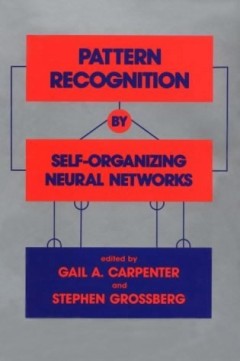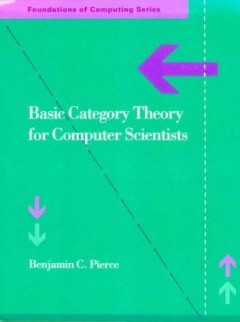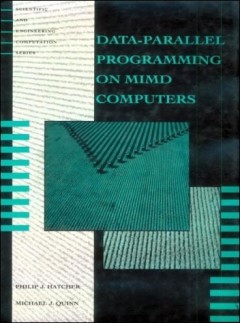Filter by

Pattern recognition by self-organizing neural networks
Pattern Recognition by Self-Organizing Neural Networks presents the most recent advances in an area of research that is becoming vitally important in the fields of cognitive science, neuroscience, artificial intelligence, and neural networks in general. Pattern Recognition by Self-Organizing Neural Networks presents the most recent advances in an area of research that is becoming vitally imp…
- Edition
- -
- ISBN/ISSN
- 9780262269896
- Collation
- 1 online resource (691 pages) :illustrations
- Series Title
- -
- Call Number
- -
Artifacts :an archaeologist's year in Silicon Valley
Silicon Valley, a small place with few identifiable geologic or geographic features, has achieved a mythical reputation in a very short time. The modern material culture of the Valley may be driven by technology, but it also encompasses architecture, transportation, food, clothing, entertainment, intercultural exchanges, and rituals.Combining a reporter's instinct for a good interview with trad…
- Edition
- -
- ISBN/ISSN
- 9780262272674
- Collation
- 1 online resource (xlix, 246 pages) :illustrations, map
- Series Title
- -
- Call Number
- -

Artificial experts :social knowledge and intelligent machines
In Artificial Experts, Collins explains what computers can't do, but he also studies the ordinary and extraordinary things that they can do. He argues that the machines we create are limited because we cannot reproduce in symbols what every community knows, yet we give our machines abilities by the way we embed them in our society. He unfolds a compelling account of the difference between human…
- Edition
- -
- ISBN/ISSN
- 0262255936
- Collation
- 1 online resource (xiii, 266 pages) :illustrations.
- Series Title
- -
- Call Number
- -

Dynamic faces: Insights from experiments and computation
The recognition of faces is a fundamental visual function with importance for social interaction and communication. This volume offers a state-of-the-art, interdisciplinary overview of recent work on dynamic faces from both biological and computational perspectives.OCLC-licensed vendor bibliographic record.
- Edition
- -
- ISBN/ISSN
- 9780262289313
- Collation
- 1 online resource (xiii, 283 pages): illustrations
- Series Title
- -
- Call Number
- -

Basic category theory for computer scientists
Category theory is a branch of pure mathematics that is becoming an increasingly important tool in theoretical computer science, especially in programming language semantics, domain theory, and concurrency, where it is already a standard language of discourse. Assuming a minimum of mathematical preparation, Basic Category Theory for Computer Scientists provides a straightforward presentation of…
- Edition
- -
- ISBN/ISSN
- 9780262288460
- Collation
- 1 online resource (xiii, 100 pages).
- Series Title
- -
- Call Number
- -

Beowulf cluster computing with Windows
Beowulf clusters, which exploit mass-market PC hardware and software in conjunction with cost-effective commercial network technology, are becoming the platform for many scientific, engineering, and commercial applications. With growing popularity has come growing complexity. Addressing that complexity, Beowulf Cluster Computing with Linux and Beowulf Cluster Computing with Windows provide syst…
- Edition
- -
- ISBN/ISSN
- 9780262286787
- Collation
- 1 online resource (xxxiii, 445 pages) :illustrations.
- Series Title
- -
- Call Number
- -

Logic Testing and Design for Testability
"Today's computers must perform with increasing reliability, which in turn depends on the problem of determining whether a circuit has been manufactured properly or behaves correctly. However, the greater circuit density of VLSI circuits and systems has made testing more difficult and costly. This book notes that one solution is to develop faster and more efficient algorithms to generate test p…
- Edition
- -
- ISBN/ISSN
- 9780262256186
- Collation
- -
- Series Title
- -
- Call Number
- -
Machine Translation: A View from the Lexicon
"Logo for the Macintosh teaches the art of programming to first time programmers. It begins with Turtle Geometry, a series of exercises involving both Logo programming and geometric concepts. Later chapters illustrate more advanced topics, such as the famous DOCTOR program with its simulated psychotherapist and an INSTANT program that enables parents and teachers to create a programming environ…
- Edition
- -
- ISBN/ISSN
- 9780262290838
- Collation
- -
- Series Title
- -
- Call Number
- -

Data-parallel programming on MIMD computers
Data-Parallel Programming demonstrates that architecture-independent parallel programming is possible by describing in detail how programs written in a high-level SIMD programming language may be compiled and efficiently executed-on both shared-memory multiprocessors and distributed-memory multicomputers.MIMD computers are notoriously difficult to program. Data-Parallel Programming demonstrates…
- Edition
- -
- ISBN/ISSN
- 9780262288484
- Collation
- 1 online resource (xiv, 231 pages) :illustrations.
- Series Title
- -
- Call Number
- -

Making Use: Scenario-Based Design of Human-Computer Interactions
"Difficult to learn and awkward to use, today's information systems often change our activities in ways that we do not need or want. The problem lies in the software development process. In this book John Carroll shows how a pervasive but underused element of design practice, the scenario, can transform information systems design.Traditional textbook approaches manage the complexity of the desi…
- Edition
- 1
- ISBN/ISSN
- 9780262269926
- Collation
- -
- Series Title
- -
- Call Number
- -
 Computer Science, Information & General Works
Computer Science, Information & General Works  Philosophy & Psychology
Philosophy & Psychology  Religion
Religion  Social Sciences
Social Sciences  Language
Language  Pure Science
Pure Science  Applied Sciences
Applied Sciences  Art & Recreation
Art & Recreation  Literature
Literature  History & Geography
History & Geography